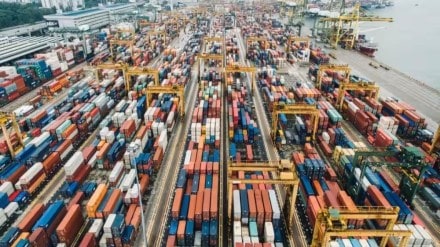By Hemant Badri, Senior Vice President and Head of Supply chain, Customer Experience, and ReCommerce, Flipkart Group
The supply chain sector in India has long been dominated by a plethora of small and marginal entities, with large organized players able to claim only a minuscule share of the market. Most operators have functioned with small fleets and constrained warehouses, limiting their ability to offer a wider spectrum of services. However, the infusion of large institutional money and technology is changing things for the better, with a KPMG report pegging the Indian logistics market to reach $380 billion by FY25, a CAGR of 10%-12%.
From being synonymous with storage and transportation, the industry is now evolving into a tech-driven service, offering end-to-end goods management, forecasting tools, last-mile delivery, and returns and analytics. Steering these changes, companies are increasingly looking at technology and digitalization as an instrument to simplify the supply chain.
ADOPTION OF TECHNOLOGY
In a sign of how rapidly logistics companies are embracing technology to optimize costs and service their customers better, the KPMG report points out that about 56 percent of Indian logistics companies are using map-based solutions for shipment monitoring. Internet-of-things, automation, electric vehicles, and location technology are among the logistics industry’s key priorities. The report cites the example of an AI-driven freight platform helping fleet owners reduce costs by providing real-time visibility in the supply chain and eliminating cargo theft, improving delays and detention, driver safety, and vendor collaboration with IoT and analytics.
The use of big data is enabling logistics providers to forecast changes in demand and suitably adjust their supply chain. With all the data and tools available, logistics companies are providing end-to-end returns services and quality inspections at customers’ doorsteps. GPS-based location services and the use of OTPs are also helping ensure higher safety for customers and fewer returns. Maps also allow companies to track driver routes on a live basis and respond quickly in case of emergencies or accidents, thus ensuring good risk management and resilience to day-to-day operations.
In select cities, e-commerce retailers and logistics firms have tied up to enable Open Box deliveries, allowing customers to open the packet and check the item before taking possession of the item, enhancing their experience. End-to-end logistics is also strengthening the D2C brands, a strong growth segment within e-commerce, according to a report by Redseer Strategy Consultants. The report says India’s e-commerce logistics space should exceed 10 billion parcels by FY28 as it rides on new categories and D2C brands and growth in tier-2+ cities.
CHANGES AT WAREHOUSES
A good reflection of the transformation in the Indian logistics space can be seen in warehouses as demand from e-commerce players makes them increasingly adopt new technologies. A great interplay of humans, automatic guided vehicles, and robots run through these 24/7 warehouses, delivering goods and happiness at customers’ doors. With verticalization taking root, companies can now have greater flexibility in their operations. While a high cost of land earlier prevented them from establishing their warehouses in cities, verticalization now allows them to do so, thus ensuring faster deliveries to customers. Integration with the websites of manufacturers and ecommerce players is also helping logistics companies gauge demand and manage inventory.
As the logistics industry evolves, it is bound to follow the changing world order rules that are calling for a greater emphasis on sustainability. At the ground level, that means having more fuel-efficient tractor-trailers and electric vehicles in the fleet, running warehouses and sortation centers on renewable power, and using less plastic in packaging. Companies are already responding to this at their end by bringing in norms and practices that force their vendors, suppliers, and other stakeholders to make the corresponding changes to mitigate climate change.
As technology gets more embedded in daily operations in warehouses and cold storages, in trucks and supply chains, and more automatic guided vehicles run through the floors of those gigantic structures, delivery times will only shrink, and customer experience will improve. As clothes to cars get ferried on India’s fast-expanding road network and the miles between the warehouse and the customer’s house shortens, India’s ‘Amritkaal’ will unfold right before our eyes.
Disclaimer: Views expressed are personal and do not reflect the official position or policy of Financial Express Online. Reproducing this content without permission is prohibited.
